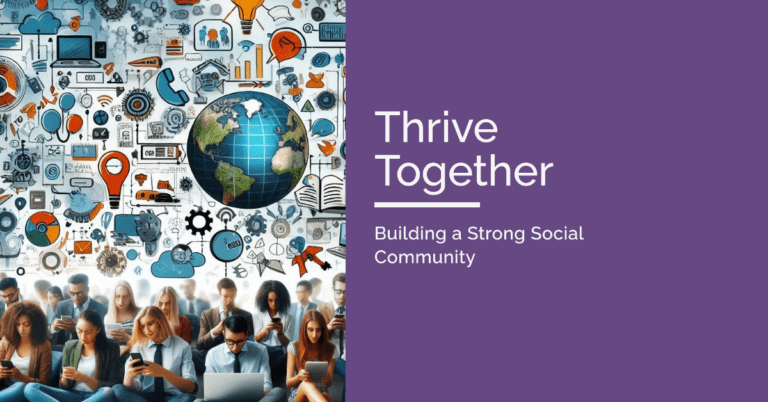Attention business owners and entrepreneurs!
Are you struggling to keep up with the ever-changing world of social media?
Are you spending countless hours manually managing your social media accounts, only to see minimal results?
Look no further than social media automation, the solution to streamline your social media activities and take your business to new heights.
Social media automation uses software tools to automate repetitive tasks such as scheduling posts, engaging with followers, and analysing data. By leveraging marketing automation, you can save time, increase efficiency, and improve the overall effectiveness of your social media strategy.
But that’s not all!
Automation also enables you to unlock your business’s full potential. With the right social media tools and strategies, you can effortlessly boost your brand awareness, drive traffic to your website, and ultimately increase sales and revenue.
So, what are you waiting for?
It’s time to unleash your potential. Say goodbye to manual tasks and hello to more time, efficiency, and success. Don’t let your competitors get ahead – act today and start reaping the benefits of marketing automation!
Understanding Social Media Automation
Definition of social media automation
Social media automation refers to automating various tasks associated with marketing and management. This includes using software tools or services to automate repetitive tasks, such as scheduling and posting content, monitoring and responding to comments and messages, tracking analytics and generating reports.
Social media automation aims to streamline and optimise marketing efforts. It allows businesses and individuals to manage their social media presence better and engage with their audience more effectively. By automating tasks that can be time-consuming and tedious, marketing automation frees up time for marketers to focus on other vital tasks, such as creating content, developing strategies, and analysing data.
Some examples of automation tools include social media scheduling software, chatbots and automated messaging, social listening and monitoring tools, and automated reporting and analytics platforms. These tools can automate tasks, including posting and scheduling content, monitoring social media channels for mentions and engagement opportunities, responding to messages and comments, and tracking key performance metrics.
However, it’s important to note that while automation can be a powerful tool for marketers, it should be used strategically and in moderation. Over-reliance on automation can lead to losing authenticity and human connection with your audience, ultimately harming your brand’s reputation. As such, it’s important to use automation tools with a human touch and to regularly review and adjust your social media automation strategies to ensure they align with your brand’s voice and goals.
Types of social media automation
- Scheduling tools: one of the most common types of social media automation. They allow businesses and individuals to plan and schedule their social media content in advance rather than manually posting real-time updates. This can save time and effort and help ensure content is posted consistently and optimally for maximum engagement. Some popular social media scheduling tools include Hootsuite, Buffer, and CadaSocialMedia
- Chatbots: automated programs that can interact with users on social media platforms via messaging applications. They can be programmed to quickly answer frequently asked questions, route users to the appropriate department, or even provide essential customer support. Chatbots can save time and money by reducing the need for human customer service representatives and can provide 24/7 support to users. Some popular chatbot tools for social media include MobileMonkey, TARS and HubSpot’s Chatbot Builder
- Automated responses: pre-written responses to common questions or inquiries sent automatically in response to messages or comments on social media platforms. These responses can help businesses and individuals save time and ensure users receive a timely response. However, it’s vital to ensure that automated responses are personalised and relevant to the user’s query to avoid being impersonal or robotic. Some social media management tools, like Agorapulse and Sprout Social, offer an automation feature for responses
- Automated analytics: can help businesses and individuals track and analyse their social media performance more efficiently. These tools can generate reports and provide insights into key metrics, such as engagement rates, follower growth, and reach. This information can be used to refine social media strategies and optimise content for better performance. Some popular automated analytics tools for social media include Sprout Social, Hootsuite Insights, and Google Analytics
It’s important to note that while social media automation tools can be handy, they should be used strategically and in moderation. Over-automation can lead to losing authenticity and personalisation, ultimately harming a brand’s reputation.
It’s vital to balance automation with human interaction and to regularly review and adjust automation strategies to ensure they align with a brand’s goals and values.
The Benefits of Social Media Automation

Social media automation can provide numerous benefits for businesses of all sizes. Here are some key reasons why social media automation is essential for organisations:
- Saves time and effort: social media automation tools can save businesses time and effort by automating repetitive tasks, such as scheduling posts and responding to messages. This frees up time for businesses to focus on other vital tasks, such as creating content, engaging with followers, and developing marketing strategies
- Improves consistency: consistency is vital when it comes to social media marketing. Businesses can use automation tools to schedule posts in advance to ensure they post content consistently and at optimal times for maximum engagement. This can help build brand recognition and increase followers and engagement
- Enhances engagement: social media automation tools can help businesses improve engagement with their audience. Chatbots and automated responses can provide quick and personalised answers to common questions, while automated analytics can help companies track engagement rates and optimise their content for better performance
- Increases efficiency: automation can help businesses manage their social media presence more efficiently. By using automation tools to monitor and track social media activity, companies can identify opportunities for engagement, track performance metrics, and adjust their strategies accordingly
- Facilitates scalability: as a business grows and its social media presence expands, it can become challenging to manage everything manually. Social media automation tools can help companies scale their social media presence by streamlining processes and enabling them to work more channels and platforms without sacrificing quality or consistency
- Reduces costs: social media automation tools can help businesses save money by reducing the need for manual labour and support staff. Chatbots, automated responses, and scheduling tools can all help businesses operate more efficiently and cost-effectively
Social media automation can provide businesses with numerous benefits, including increased efficiency, engagement, and cost savings. By leveraging the power of automation tools, companies can streamline their social media marketing efforts and achieve better results in less time. However, it’s important to use automation strategically and in moderation to ensure that it aligns with a business’s goals and values and doesn’t compromise its brand’s authenticity or human touch.
Implementing Social Media Automation

Implementing social media automation requires a strategic approach to ensure businesses can maximise the benefits of automation tools. Here are some critical steps to consider when implementing social media automation:
- Defining your goals: businesses should define their goals and objectives before implementing social media automation. Having clear goals can help companies choose the right automation tools and develop a strategy that aligns with their objectives. These could include increasing engagement, driving traffic to a website, generating leads, or building brand awareness.
- Choosing the right social media platform: businesses should choose the platforms that align with their goals and target audience. Each platform has strengths and weaknesses; companies should choose the most relevant to their audience and objectives. For example, LinkedIn might be more suitable for B2B companies. At the same time, Instagram might be more effective for B2C companies targeting younger audiences.
- Developing your strategy: once businesses have defined their goals and chosen the right platforms, they should develop a social media automation strategy. This should include a content plan, messaging guidelines, and a timeline for scheduling posts. Businesses should also consider using automation tools like chatbots and automated responses to engage with their audience and provide customer support.
- Scheduling your content: social media automation tools can help businesses schedule their content in advance, saving time and ensuring consistent posting. Companies should consider the best times to post and how frequently to post to ensure they reach their target audience at the right time.
- Monitoring and analysing your results: social media automation tools can help businesses track their performance and identify opportunities for improvement. Businesses should regularly monitor their engagement rates, follower growth, and other key metrics to ensure their social media strategy is effective. By analysing their results, companies can adjust their strategy and optimise their content for better performance.
Implementing social media automation requires careful planning and a strategic approach. By defining their goals, choosing the right platforms, developing a strategy, scheduling content, and monitoring their results, businesses can maximise the benefits of automation tools and achieve their social media marketing objectives.
Social Media Automation Best Practices

Quality Content
Social media automation can be a great asset in streamlining the management and growth of a social media presence. Not only can it help save time and energy, but it can also help improve efficiency. Automation tools can help automate social media tasks such as scheduling posts, finding relevant content, and tracking analytics. In addition, it can help target specific audiences and increase engagement with existing followers. When utilising automation tools, it’s important to remember that quality content is crucial in driving engagement and building a loyal audience. Quality content should resonate with your target audience, be relevant to their interests, and be updated with industry trends. It should also be engaging and encourage interaction with your followers. By creating quality content, you can maximise the potential of automation tools and create a successful and engaging social media presence.
Knowing Your Audience
Creating content that resonates with your audience is essential to success on social media. To create content that resonates, you must first understand your audience. Gather data and analytics to learn about your audience’s demographics, interests, and behaviour on social media. This data can help inform your content strategy and allow you to create content that speaks directly to the needs and interests of your audience. Data and analytics can also help you target specific audiences and optimise your content for maximum engagement. By understanding your audience and creating content tailored to them, you can build a strong and engaged following on social media.
Personalisation
To create content that resonates with your audience, you must understand who they are, what they want, and how they interact with your brand. Utilise data and analytics to get to know your audience’s demographics, interests, and behaviour on social media. This will help you create content that speaks directly to their needs and interests. While automation can save time, it’s essential not to sacrifice personalisation. Take advantage of personalisation features in your social media automation tool to address your audience by name, segment them into specific groups, and provide tailored content that speaks directly to their interests. This will help create a more meaningful and engaging relationship with your followers and build loyalty with your existing audience.
Consistency
As mentioned earlier, maintaining a consistent posting schedule is critical for building engagement and trust with your audience. Utilise your social media automation tool to schedule posts ahead of time and aim for a consistent posting frequency that aligns with your audience’s preferences. This will help ensure that your followers receive content regularly and will help build a trusting relationship with your audience. Additionally, automation tools can help optimise the timing of your posts for the best reach and engagement. By scheduling posts ahead, you can ensure your followers see your content at optimal times.
Flexibility
While consistency is essential for social media success, remaining flexible and adaptable is also important. Monitor your results regularly and be willing to adjust your strategy as needed. Pay attention to changes in social media algorithms, analytics, and industry trends, and be prepared to pivot your strategy accordingly. This will help you stay ahead of the game and ensure you create content that resonates with your audience and meets their needs. Additionally, it will help you remain competitive in an ever-changing digital landscape.
Social Media Automation Tools

A social media automation tool is essential to social media management. This type of social media management tool helps streamline the process of scheduling, publishing, and analysing social media content across multiple platforms. Several social media automation tools are available, but not all may suit your business needs. Here are some popular tools:
Hootsuite
Hootsuite is one of the most popular social media automation tools businesses use. It allows you to schedule posts across multiple social media platforms, monitor brand mentions, and track analytics.
Buffer
Buffer is another popular social media automation tool. It allows you to schedule posts, collaborate with team members, and track performance metrics. It also has a browser extension that makes sharing content from the web easy.
Sprout Social
Sprout Social is a comprehensive social media automation tool that allows you to schedule posts, monitor brand mentions, and track performance metrics. It also includes features for social listening, audience engagement, and customer service.
Agorapulse
Agorapulse is a social media automation tool that allows businesses to manage multiple social media accounts from a single dashboard. It offers a range of features, including social media scheduling, monitoring, and reporting. Agorapulse’s analytics feature provides detailed insights into social media metrics such as engagement rates, reach, and impressions.
CadaSocialMedia
CadaSocialMedia is a social media automation platform that allows businesses to manage their social media accounts more efficiently. Users can schedule posts, monitor their accounts, track their analytics, and engage with their audience.
One of CadaSocialMedia’s unique features is its “smart scheduler,” which automatically schedules posts based on when your audience is most active. This helps ensure that as many people as possible see your content.

Examples of Social Media Automation in Action

Social media automation has many practical applications that streamline your social media management tasks and help your business grow. Here are a few examples of how social media automation can be used:
Scheduling Posts
Scheduling your social media posts in advance can save you time and ensure your content is posted consistently. Automation tools like Hootsuite, Buffer, and CadaSocialMedia can help you do this quickly and easily. With these tools, you can schedule posts across multiple social media platforms to reach your audience where they are. This will help you maximise the potential of your content and reach the maximum number of people. Additionally, these tools can help you track analytics and measure the success of your posts, allowing you to make informed decisions about what content works best for your audience.
Automated Responses
Automated responses can be a powerful tool for handling routine inquiries and customer service issues. For example, you can set up automatic responses to acknowledge new followers or to respond to frequently asked questions. This can help improve response times and increase customer satisfaction by providing a more efficient, personalised customer experience. Automated responses can also be used to thank customers for patronage, share discounts and promotions, and provide helpful resources. Automatic responses can be customised to fit your brand’s tone and style, allowing you to provide a more personalised customer experience even when responding to automated messages.
Chatbots
Chatbots are a form of automated response that uses artificial intelligence to interact with customers in real-time. Chatbots are particularly useful for businesses receiving inquiries or needing 24/7 customer service. They can help answer questions, provide product recommendations, and even complete transactions. Chatbots can save time and resources, as they can respond to questions quickly and accurately. Additionally, they can provide a personalised experience, using customer data to deliver tailored recommendations and targeted content. Finally, they can help increase customer satisfaction, providing a more efficient and convenient way to interact with customers.
Analytics and Reporting
Social media automation can also help you track your social media performance and measure your success. With analytics and reporting features, you can track engagement, monitor your competitors, and identify areas for improvement. Additionally, many automation tools come with built-in analytics and reporting features that can provide valuable insights into your audience and in-depth analysis of your content performance. This data can help you decide what content to share and how to optimise your strategy for maximum impact.
Social media automation tools can help businesses save time, increase efficiency, and improve engagement with their audience. However, using these tools correctly and avoiding common mistakes is essential.
Common Mistakes in Social Media Automation

Even though social media automation can significantly benefit businesses, it’s essential to avoid common mistakes that undermine its effectiveness. Here are some of the most common mistakes companies make when using social media automation:
Lack of Personalisation
One of the most common mistakes businesses make when using social media automation is failing to personalise their messages. When messaging potential customers through automated means, it’s imperative to customise your message to make it more personalised and engaging. This can be done through language, tone and content tailored to your specific audience, making them feel like they’re conversing with a human. Suppose automated messages are too impersonal or robotic. In that case, potential customers may be turned off and disengaged from the conversation. Therefore, creating automated messages tailored to your target audience is essential to ensure that your messages are received and engaged.
Over-Automation
Automating every aspect of your social media presence can be tempting to save time, but this can lead to a lack of authenticity and engagement. When your social media presence is overly automated, it makes it harder for your followers to engage with your content. It can give the impression that your brand isn’t genuinely interested in what its customers have to say, which can significantly damage your brand’s image in the long run.
The key to successful social media automation is to find a balance between automated and manual tasks. Automation can be an excellent tool for saving time and increasing efficiency. Still, it’s essential not to rely too heavily on automation. You should always have some manual tasks in your social media strategy, such as replying to customer comments and engaging in conversations. This will show your followers that you value their input and help you build a genuine relationship with them.
Ignoring Engagement
Monitoring social media accounts is essential for businesses that want to stay engaged with their customers and maintain a good reputation. Automation tools can streamline tracking reports and respond to comments or messages, saving time and effort while ensuring no customer is ignored.
Automation tools can help businesses track customer interactions. However, responding to comments and messages promptly and personally is still essential. Automation should not be seen as a replacement for human interaction. Businesses risk damaging reputations and losing customers by failing to respond to customer comments or messages. Automation tools should be used to complement customer interaction, not completely replace it.
Not Adapting to Change
Social media has revolutionised how businesses interact with their customers, and organisations need to stay on top of the latest trends and developments. Social media is constantly evolving, and companies that don’t keep up with these changes risk becoming obsolete compared to their competitors. Therefore, regularly updating your social media strategy is essential to stay ahead of the competition. This means staying abreast of the latest trends, such as the use of video content, live streaming, and AI-enabled bots, and adjusting your strategy to capitalise on these developments. Additionally, automation can be a great tool to help manage and streamline your social media strategy, freeing up time and resources to focus on other aspects of your business. Automation can help you stay organised, increase engagement, and reach more potential customers. Ultimately, organisations must remain flexible and agile to stay ahead of the competition and make the most of the latest changes in social media.
In conclusion, businesses can ensure that their social media automation efforts are effective and well-received by their audience by avoiding these common mistakes.
The Future of Social Media Automation

Social media automation has come a long way in recent years, but the future of automation is even more exciting. Here are some of the trends that are shaping the future of social media automation:
AI and Machine Learning
Artificial intelligence (AI) and machine learning are becoming increasingly popular in social media automation. These technologies are helping businesses better engage with their customers, analyse social media data, and automate responses.
AI can create personalised content tailored to the target audience, allowing businesses to engage more effectively with their customers. It can also analyse data and use insights to understand customer behaviour and preferences better.
With machine learning, companies can automate their responses to customer inquiries, freeing up time and resources that would otherwise be devoted to customer service. As these technologies become more advanced, their role in social media automation will continue to expand in the coming years.
Voice Activation
As voice-activated devices like Amazon’s Alexa and Google Assistant become more common, businesses must adjust their social media automation strategies to take advantage of the latest developments. These devices can perform various tasks, such as scheduling posts, responding to messages, and analysing data. This benefits businesses by saving them time and effort while providing valuable insights into customer behaviour.
Using these voice-activated devices can also help to improve engagement and visibility on social media platforms. Automated messages and posts can be tailored to specific audiences, increasing the chances of a post being seen. In addition, automated messages can be sent out at optimal times throughout the day, allowing businesses to reach a wider audience.
Finally, social media automation can also help businesses to generate leads. Automated messages can encourage users to visit a website, sign up for a newsletter, or complete a purchase. Automated posts can also promote special offers or discounts, driving traffic to a website and potentially converting visitors into customers.
In short, voice-activated devices allow businesses to automate their social media activities and take advantage of the latest technologies. Automation can save time and effort, improve engagement and visibility, and generate leads, boosting any business.
Real-Time Automation
Real-time automation is a game-changer for businesses in social media automation. This trend allows companies to react to events and trends as they happen, ensuring they stay up-to-date and relevant in their marketing efforts. This type of automation enables companies to respond swiftly to customer inquiries, generate leads, and keep their social media channels active with timely content. Real-time automation also helps businesses build relationships with their customers and other industry influencers, which can help them boost their social media presence.
Furthermore, real-time automation can help businesses stay ahead of the competition by providing timely and relevant content that can help them reach new customers and engage with their existing ones.
In short, real-time automation is a powerful tool that can help businesses maximise their social media performance.
Virtual Reality
Virtual Reality (VR) is still in its early developmental stages. Still, it can potentially revolutionise how businesses use social media automation.
Companies can use VR to showcase their products excitingly and engagingly by creating immersive user experiences. For example, they could demonstrate how a product works or give customers a virtual tour before buying it. VR also allows businesses to customise content to better engage their audience, such as creating tailored experiences for different segments of users.
Additionally, it can provide valuable data and insights, such as tracking how users interact with content and how long they spend engaging with it.
As VR technology becomes more sophisticated, businesses can capitalise on its potential to create unique and engaging content that will give them an advantage over their competitors.
Final Thoughts

Social media automation is a powerful tool that can revolutionise how businesses interact with their audience online. By using scheduling tools, chatbots, and automated analytics, companies can save time, increase efficiency, and improve engagement with their followers.
In addition to the benefits of social media automation, businesses should avoid common mistakes, such as over-automation and ignoring engagement. Personalisation, quality content, and consistency are critical to ensuring success with social media automation.
As technology advances, the future of social media automation looks promising. With the integration of AI and machine learning, voice activation, and real-time automation, businesses must stay informed and adapt to these changes to remain competitive and relevant.
In summary, social media automation offers numerous benefits for businesses, from time savings to improved engagement. However, companies must implement it effectively to take advantage of these benefits. Businesses can do this by defining their goals, choosing the right platform, developing a strategy, scheduling content, and monitoring and analysing results.







